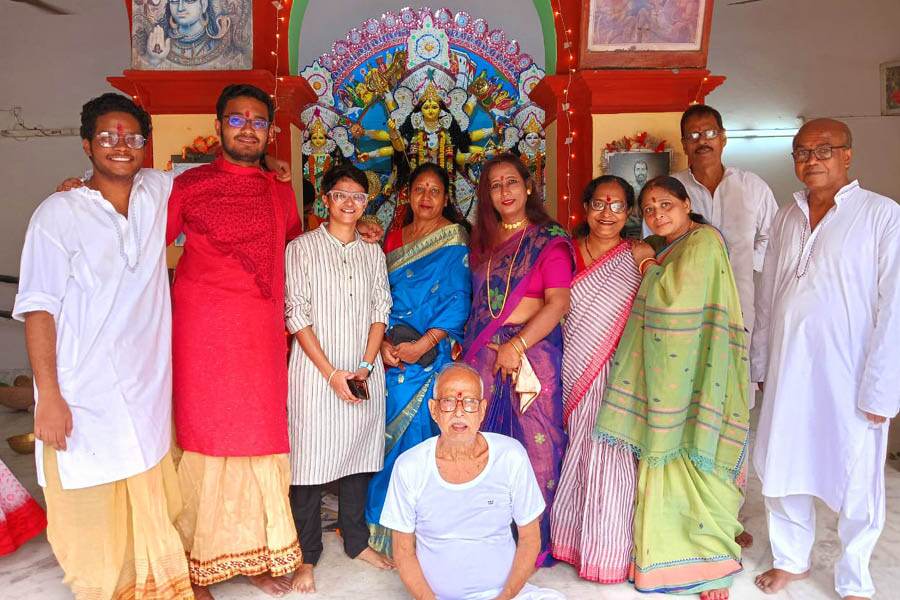In 1967, along with many other uprooted Hindus from Pakistan, Hari Narayan Biswas left everything behind in a small village named Bhabhitroyga in Narayanganj, Dhaka. He was also leaving a century-old heritage of his family — the cultural legacy of Durgotsav that his forefather Gangaram started in 1844, which was one of the prime events of the locality among all people, even among non-Hindus.
Lives, dignity, property and religious rights were all in a mess after the Indo-Pak partition in 1947. Even in that nightmarish time, a sizable Hindu population was still there to carry on their lives with a strong belief that good times would come soon.
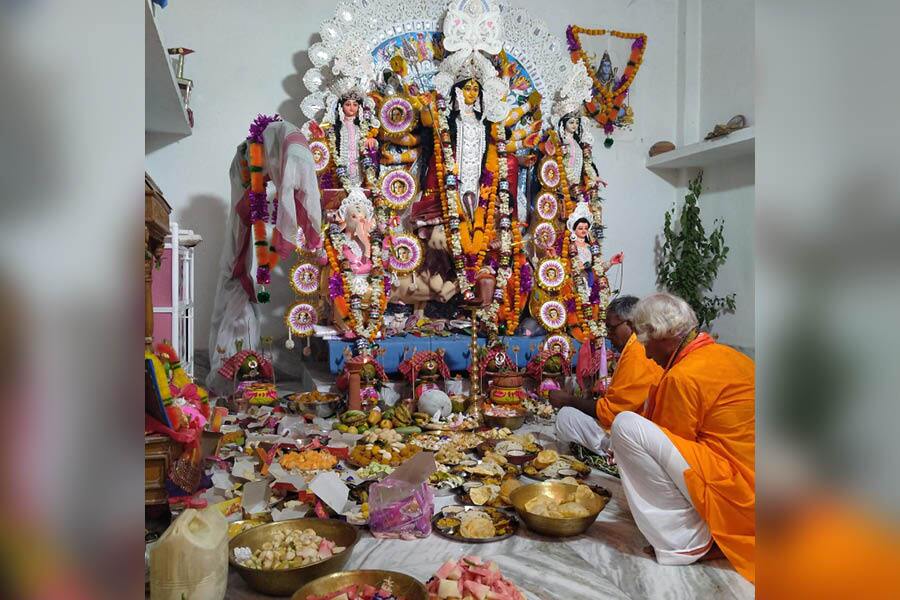
Hari Narayan started to perform Durga Puja, in its simplest form in a village named Bankimnagar, near Ranaghat, in Nadia, post Partition
After the 1964 Calcutta riots, followed by the India-Pakistan war in 1965, things became worse. The entire East Pakistan saw a huge exodus of Hindus to almost all districts of Bengal, Assam, and Tripura. After Hari Narayan Biswas’s departure from Pakistan, his father, Nanda Kumar Biswas and mother, Labanyomoyi Biswas, somehow tried to continue the puja but failed badly.
A devastated Hari Narayan, leaving all his wealth behind, arrived in a village named Bankimnagar, near Ranaghat, in Nadia and faced poverty. Still, in that precarious time, his dedication to worshipping Devi Durga prompted him to perform Durga Puja, even in its simplest form. He started worshipping ghot puja in Bankimnagar, in 1969, thanks to the solid support he received from his wife, Lakshmi Rani Dutta Biswas. He performed the worship of arms on the day of Ashtami to invoke the Goddess of Shakti. His firsthand experience of witnessing the aftermath of Partition inspired him to seek a power for self-protection.
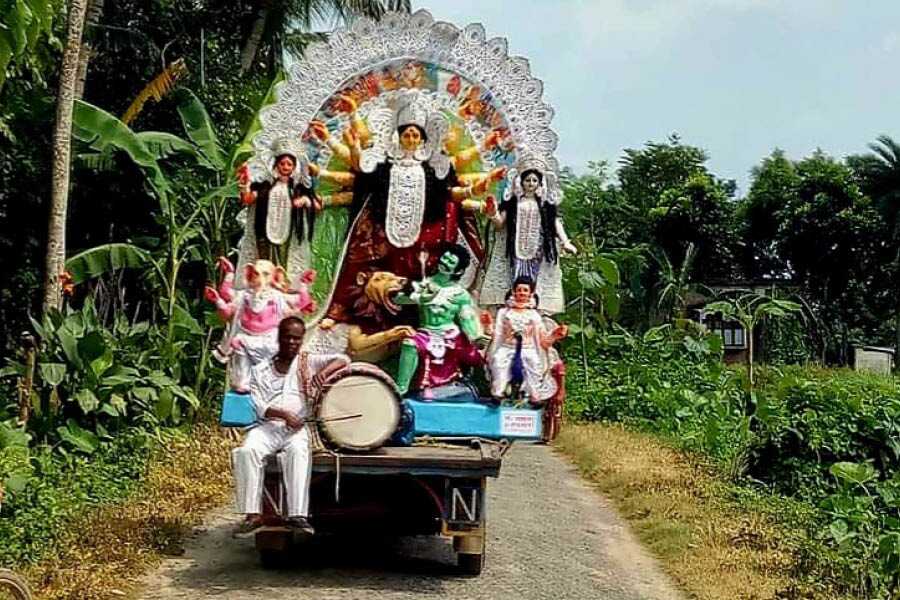
Arrival of Maa at Biswas residence
However, the never-ending poverty of an uprooted family did not allow him to continue the puja for many years. Soon, the puja that was started by this agriculturist family way back in 1844 finally came to an end in the early 1970s.
It took nearly 40 years for the three sons of Hari Narayan to grow up and cement their positions in society after completing their education. The elder son, Bidyut, who had grown up hearing the glory of their family puja in East Pakistan, always wished to restart the puja and his joy knew no bounds when he won the consent and confidence of his mother and two younger brothers, Dilip and Biraj.
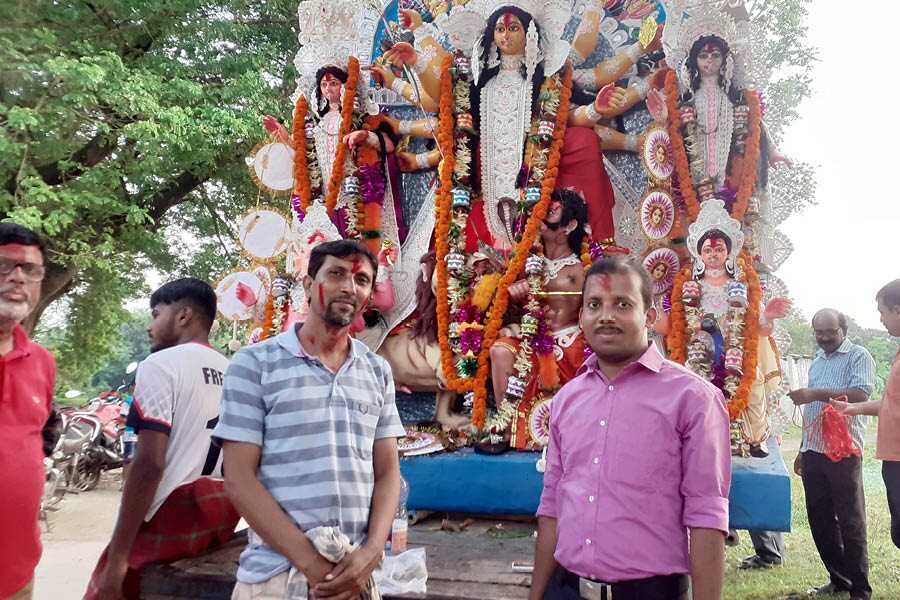
The present generation of Biswas family has brought back the past glory
Thus, in 2013, the century-old Biswas family puja was raised from the dust like a phoenix and became one of the very few family pujas in Bengal where, after a gap of four decades, a fifth generation came forward to reclaim a family legacy that was once destroyed due to the Partition.
The first thing that Bidyut and his brothers decided was to reintroduce idol worship, which was never possible for their refugee father. By following the tradition of kathamo pujo on the day of Rath Yatra, as they had in olden days, they gave the first advance to the idolmakers to reinstate the past ritual.

Women in the family gear up Sandhi Puja, selecting lotuses
Nabapatrika bathing on the day of Saptami is a grand event. Remembering their past profession as agriculturists, the worship and installation of this have prime importance. Nabapatrika is taken for a bath in a palanquin with the sound of beating dhaaks to make the occasion remarkable.
Now, in their 12th year of celebration this year, the Biswas family of Bankimnagar worships Durga as a mother and, surprisingly, has not introduced the ritual of animal sacrifice before Devi. Though there was a time when astra pujan or the worship of arms, was a part of this puja, it is now done symbolically. Also, Devi is not offered any non-vegetarian food.

Sandhi Puja arati by the priest; one of the special features of this puja is that Devi is not offered any spirits, even at the time of Sandhi Puja
The family invites a large section of the village to have Ashtami bhog on the day of Ashtami. Nearly 700 people, including relatives, friends and village dwellers, participate in this. On other days, nearly 50 people, mostly relatives, have their meals during puja.
Though only vegetarian food is offered to Devi on all three days, a pair of Hilsa is offered on the day of Dashami. On that day, family members are allowed to have non-vegetarian food after the immersion is done. One of the special features of this puja is that Devi is not offered any spirits, even at the time of Sandhi Puja. The planned omission of not offering any spirit to Durga was introduced when the puja was restarted in 2013.
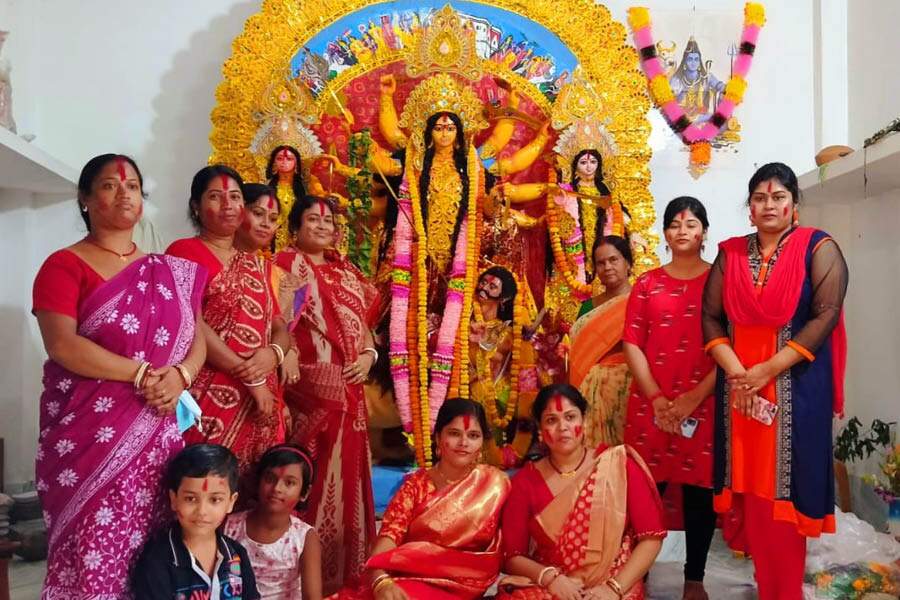
Women gather for ‘sindoor khela’ on Dashami
There was a wooden Durga mandap at their ancestral house until 1965. Presently, they have also built a permanent concrete shed, which is decorated with exotic alpana during Durgotsav.
The 42-year-old Bidyut is more than happy to have managed to restart his family Durga puja, and he is sure his next generation will carry it on.
“What is gone is gone. We cannot live a life only with regrets and nostalgic memories. Rather, those of us who have bounced back from the dark edge of devastation caused by the Partition must reclaim our heritage. We are proud that our unvanquished willpower has triumphed over the malice of communal divide,” he signs off with a flash of contentment on his face.


